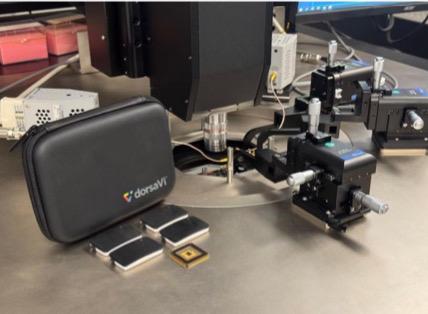
In a decisive step forward for next-generation biomedical technology, DorsaVi Ltd (ASX: DVL) has revealed breakthrough results from the integration of resistive random-access memory (RRAM) into its sensor and AI platforms. Announced on 22 July 2025, this development marks a significant milestone for the Melbourne-based healthcare innovator, widely known for its real-time movement sensor solutions across clinical, workplace, and elite sports markets.
This innovation positions DorsaVi at the cutting edge of the rapidly evolving biosensing and wearable health-tech landscape—where speed, accuracy, power efficiency, and system endurance are non-negotiables.
In a clean room-based evaluation conducted in Singapore, DorsaVi’s team benchmarked its legacy flash memory system against a hybrid architecture featuring RRAM. The results were staggering:
| Metric | Legacy System | RRAM-Enabled System |
| Write Latency | 1,000–10,000ns | 200ns |
| Read Latency | 50,000–100,000ns | <10ns |
| Write Energy (per bit) | 1250pJ | <200pJ |
| Endurance (P/E cycles) | 10⁴–10⁵ | >10⁷ |
| Data Retention (85°C) | 10 years | >10 years |
The hybrid configuration smartly offloads high-frequency, wear-intensive tasks to RRAM while keeping NAND usage efficient—extending device life and improving performance in real-world biomedical use.
DorsaVi’s sensors are already used for electromyography (EMG) and electrocardiography (ECG) in clinical settings. With the new RRAM architecture:
Chairman Gernot Abl captured the significance succinctly:
“The results provide strong technical validation for the role RRAM can play in advancing our sensor platforms. We’re seeing clear evidence that RRAM can enable faster, more durable, and energy-efficient systems—capabilities essential for our next-gen real-time biomedical & AI sensors.”
While the current focus remains on enhancing DorsaVi’s existing ViMove+ platforms and clinical wearables, the implications of RRAM go much further.

Source: Dorsavi ASX Announcement
This technology paves the way for advanced embedded medical devices including:
In essence, RRAM is enabling not just a better sensor—but a smarter, more autonomous system capable of adapting in real-time.
As of 22 July 2025, DorsaVi shares were trading at A$0.024, up 9.09% on the day. While modestly priced, the stock has returned 84.62% over the past year, buoyed by its tech-driven strategy and consistent innovation.
With 911.2 million shares on issue, the company’s market capitalisation now stands at A$21.87 million. That figure still positions DVL as an under-the-radar small-cap with a potentially high-impact IP portfolio—a setup increasingly attractive to tech-health crossover investors.
DorsaVi’s strategy is clear: evolve from a sensor hardware company into a platform-driven, edge-AI health tech leader. The integration of RRAM is not just an engineering milestone—it reflects a broader thematic shift toward:
The use cases are rapidly expanding in both clinical health and occupational risk settings. From sports science to aged care, wearable and embedded sensors are rewriting how health data is collected and interpreted.
And DorsaVi wants to be at the center of that ecosystem.
According to company disclosures, the next milestones for DorsaVi include:
This forward-looking roadmap should set the stage for clinical trials, regulatory submissions, and deeper penetration into high-value use cases.
While it may not carry the headline weight of biotech breakthroughs or large-cap medtech players, DorsaVi is playing a long game—rooted in precision engineering, cutting-edge memory science, and market-ready sensor design.
As healthcare becomes more decentralised, real-time, and wearable-centric, the innovations DorsaVi is quietly integrating today may define how patients are monitored tomorrow.
The adoption of RRAM into its core platform places DorsaVi ahead of the curve—and at the frontlines of a smarter, faster, and more resilient generation of healthcare technology.
Disclaimer - Skrill Network is designed solely for educational and informational use. The content on this website should not be considered as investment advice or a directive. Before making any investment choices, it is crucial to carry out your own research, taking into account your individual investment objectives and personal situation. If you're considering investment decisions influenced by the information on this website, you should either seek independent financial counsel from a qualified expert or independently verify and research the information.
Tags:
RECENT POSTS
TAGS
Subscribe to the Skrill Network Newsletter today and stay informed
Recommended Articles